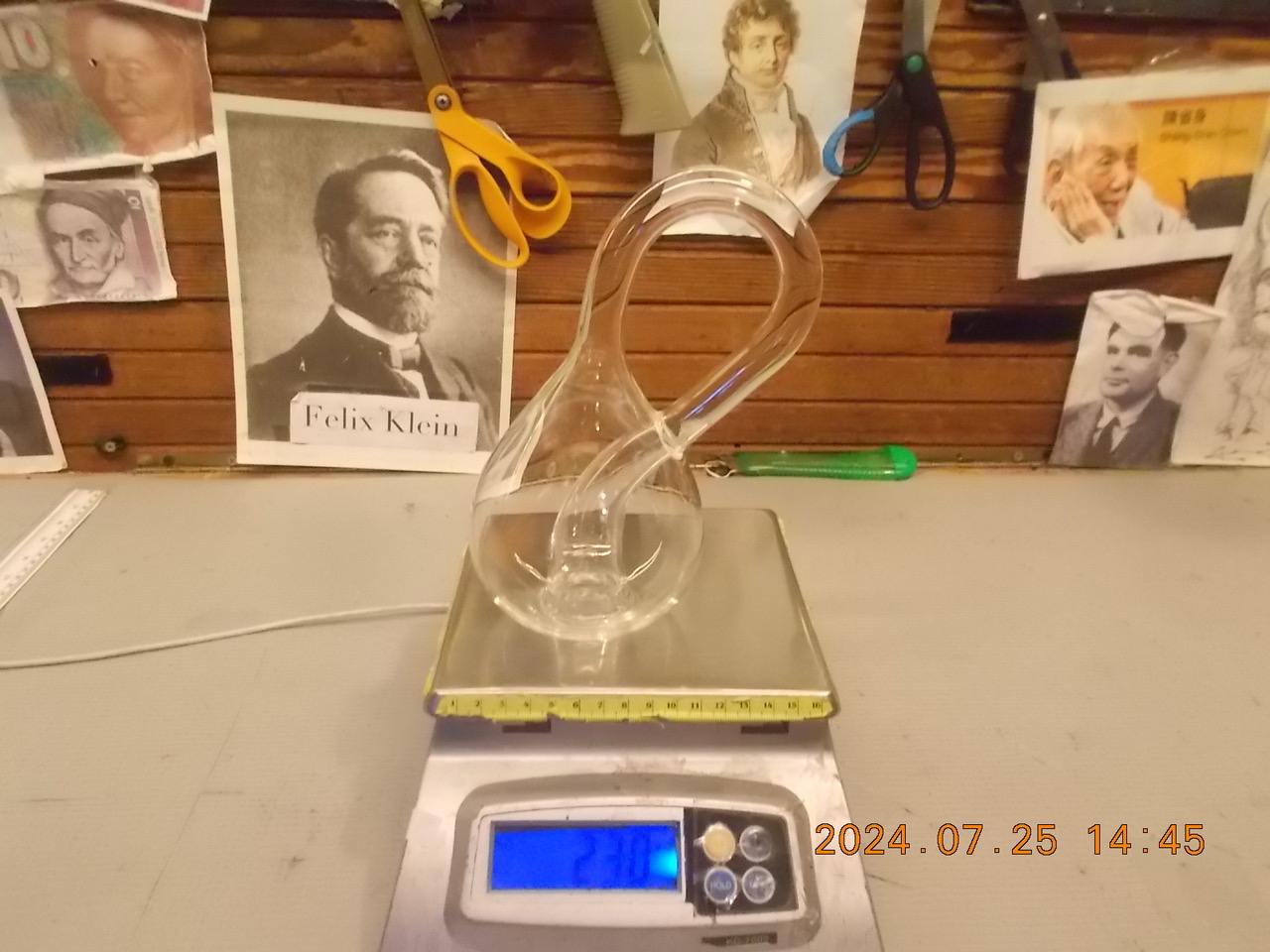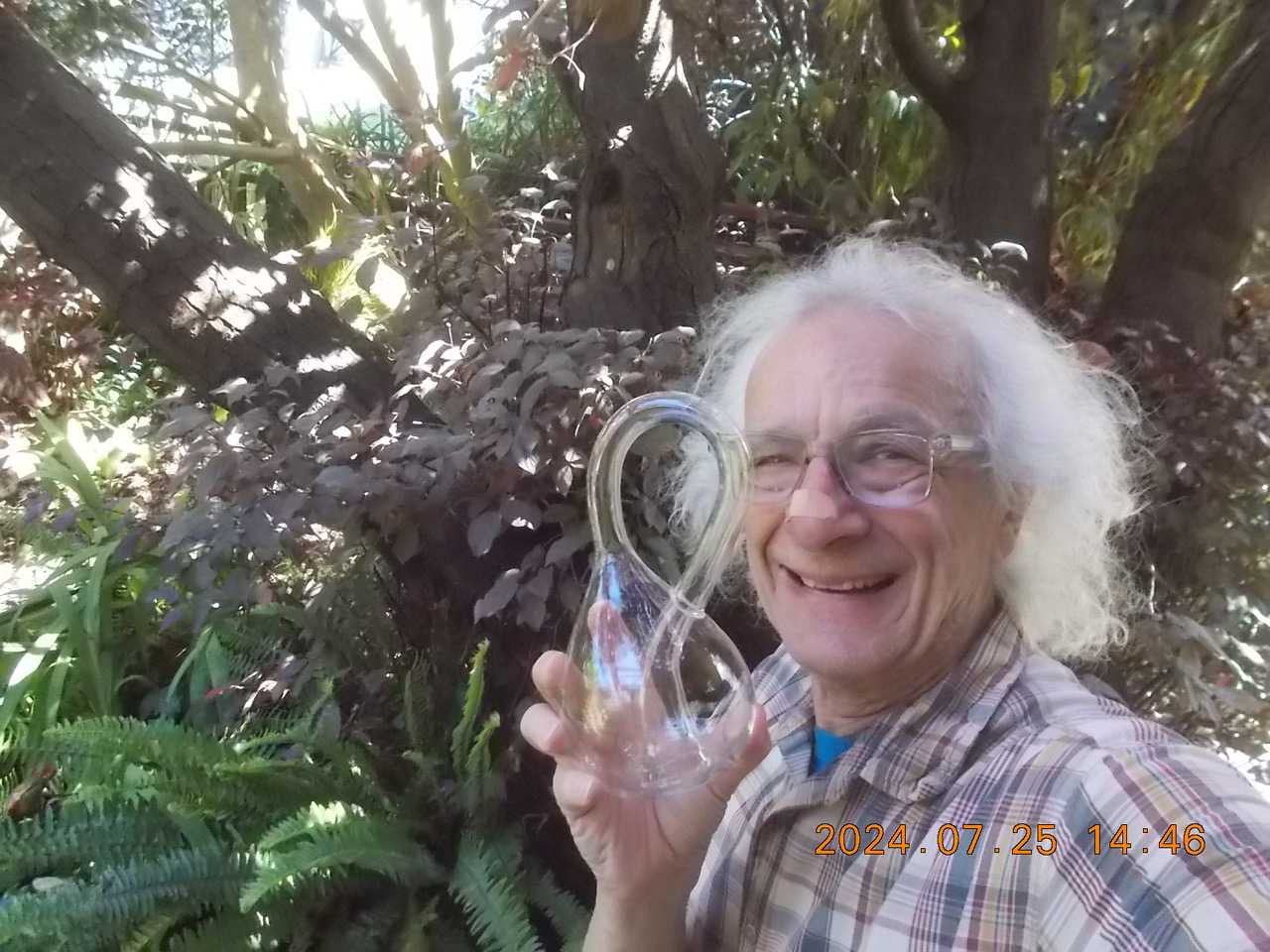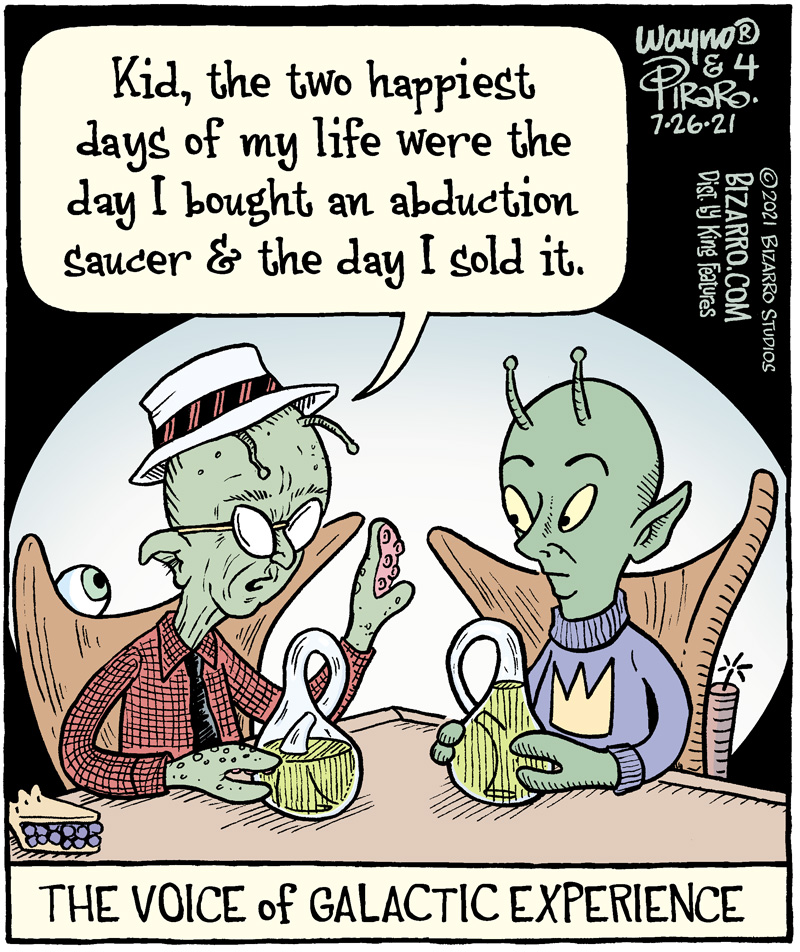
I recently received a Klein bottle as a gift from my life-long friend Rich, who shares the same quirky interests in math and science that I do. We find the same fascination and amusement in mathematical puzzles and their visual incarnations by artists like M C Escher, Buckminster Fuller, and Scott Kim, along with mathematicians John Conway, Roger Penrose, and Benoit Mandelbrot. So it was with tremendous pleasure that I received this gift. I soon discovered that it held not only the novelty of being a mathematical object, but it had been created by a scientist/artist that had inspired me in an earlier time in my life.
A Klein bottle is a conceptual artifact from the field of topology, a branch of mathematics that explores the essence of surfaces and curves, of holes, edges and dimensions. It defines concepts of area and volume, inside and outside, deformation and connectedness.
I first encountered this branch (or should I call it a manifold), of mathematics in a popular science book series published by Time-Life in the 1960s. I remember reading about the unexpected behaviors of the Möbius strip, a loop of paper which had the property having only one side and one edge. As a young skeptic, I had to personally reproduce the experiment of cutting one in half, lengthwise, to find that it made not two separate copies, but a single loop, twice as long!
The book went on to explain that in the field of topology, a donut was the same as a coffee cup. It mattered not the shape, but rather the number of holes. If given a clay donut, it could be pressed and manipulated and deformed such that the donut hole migrated to the side to become a handle, and a dimple at the edge could expand to form the bowl of the cup.
I could imagine working a lump of clay in this manner, but the next page of the book demonstrated that you could remove a vest without taking off your coat. Despite the photo sequence, at age ten, I couldn’t quite follow it. I suppose I should get back to trying it myself, now that I actually own a vest and a suitcoat!
A Möbius strip is a two dimensional object: modeled by a loop of paper with a half twist. It can be extended to three dimensions and the result is called a Klein bottle (Felix Klein mathematically sewed the edge of one Mobius strip to another, and this was the result). It has no inside or outside; it has a single surface. It has zero volume and no edges!
So of course I would be thrilled to receive one! It was a masterful work of glass blowing, immersing (not embedding) the four-dimensional object into three-space. As I marvelled at it, Rich and I reminisced about our early physics and math training that enhanced our appreciation for this odd object.
Rich had acquired this novelty item from a website, a rather simplistic website by today’s standards; one created in the late 1990’s and only updated as required to stay displayable by modern browsers. But the artist behind the glass Klein bottles turned out to be a familiar name: Clifford Stoll. He is an astrophysicist with immense enthusiasm, which he has applied to his interest in Klein bottles.

Clifford Stoll wrote a book in the late 1980s, “The Cuckoo’s Egg“, in which he described his encounter and exposure of the first known cyber spy. He was a graduate student working on his PhD, and was given an assignment to figure out a small accounting discrepancy in the lab’s computer usage. I recall reading this book and being quite impressed at his determined and inventive methods to track the rogue user down.
I was also impressed at the description of his oral exams, in which he was asked “Why is the sky blue?” He answered with the usual explanations of the physics of light and air, but with each layer of explanation he offered, a followup question was issued to the effect of “why is that?” Eventually the answers reached the limits of what we know about subatomic particles and quantum mechanics. Yes, “education is the process of telling ever-smaller lies”, but at a PhD oral exam, you need to know all of them!
Clifford Stoll was working on his graduate degree at about the same time I was, and the stories he told about computers in the 1980s matches my experience as well. At the time, we thought we had incredible computational abilities, but looking back, forty years later, we were still in the stone ages.
So his book made a big impression on me, and when I looked further into his venture of making and selling Klein bottles, I was even more impressed. Here are a few links to explore if you enjoy this particular rabbit hole. As I expressed to Rich, “I am thrilled to learn that my Klein bottle was fetched by a homemade robot from an underground crawlspace by the author of The Cuckoo’s Egg, and then mailed with his personally inscribed labels of “No Side Up”!
Here is Adam Savage, as pleased as I am at having a Klein bottle from Clifford Stoll:
Cliff Stoll, showing his system for filling Klein bottle orders:
- * The title of this post is an obscure reference to a popular comedy and satire group from the 1970s, Firesign Theater. Here is a little more about it:
http://waynocartoons.blogspot.com/2021/07/may-i-have-another.html



Best post yet, Thor!
It is fascinating how Thor can turn my world upside down, starting with my own thoughts.